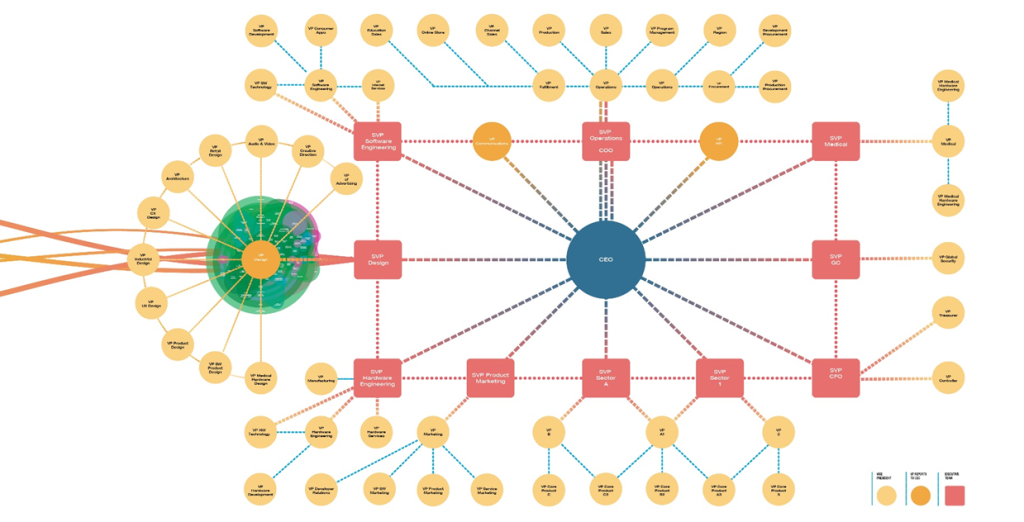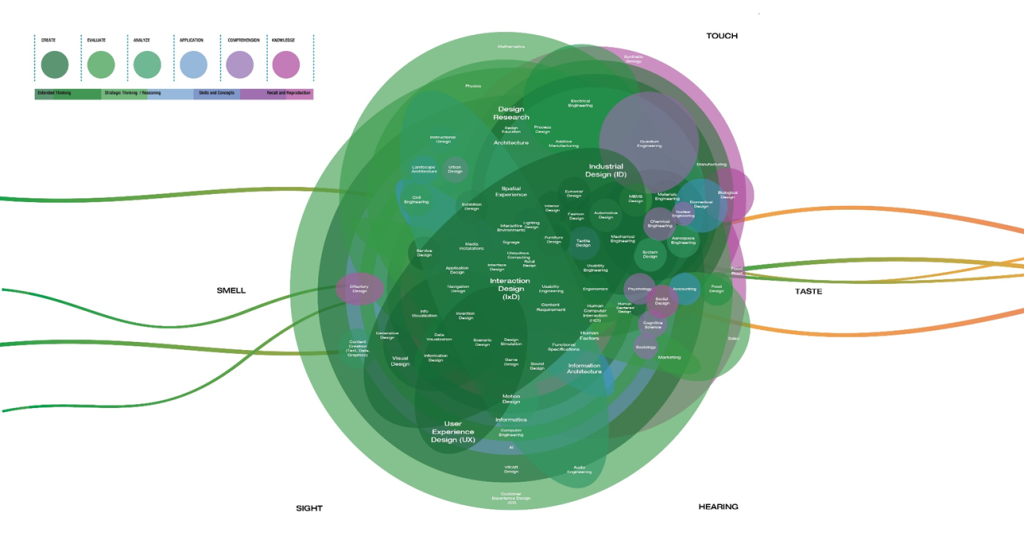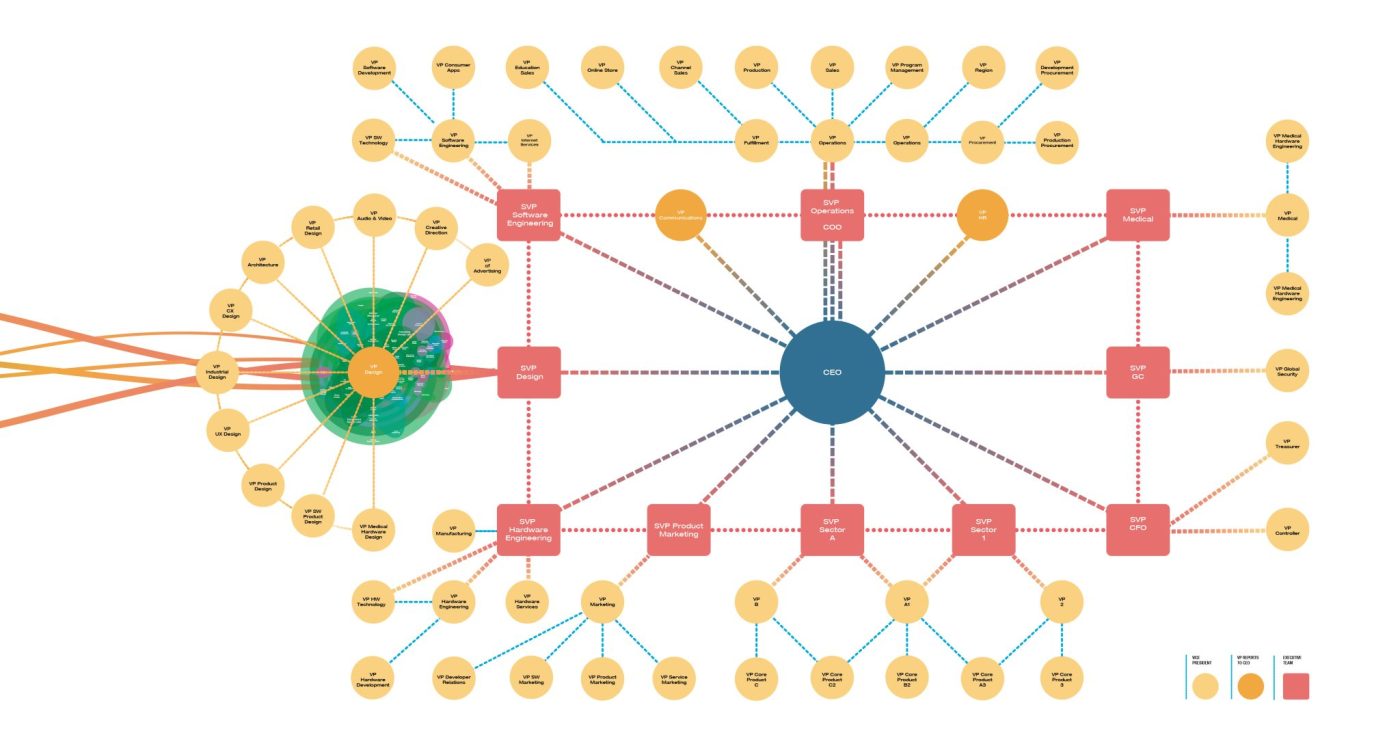
Do you want to transform your business into a design-centric organization?
Original Publication 4/29/2019
By Ramak Radmard, founder of Lucidream
Established in 1999, at Lucidream we identify inspirational opportunities for our clients by balancing their unique advantages and capabilities. Exploring their presented opportunity, we discover and strategize innovative methods and solutions that add value to their business model.
We develop, design and deliver integrated organizations, systems, products, technology, intellectual property, and experiences. Our investigation, examination, and exploration reveals insight and opportunities, culminating in seamless user experiences and interaction.
Lucidream’s sustainable, design and human-centered process generates an extensive understanding of a business category. Our design research shapes decisions around product form, functionality, usage, and intellectual property.
We use these insights to create innovative ideas and provide superior organizations, products, and experiences for our clients – and their customers.
Untapped Organizational Opportunities
Activating opportunities by creating the future of human experience, awakening the senses
Organizational Failure
It is unfortunate to see large organizations leaving so many opportunities untapped. How do you go about activating these opportunities?
Most of these opportunities are design-driven elements that are associated with different senses. Senses are the key to understanding experience, the more senses a brand can awaken, the deeper the connection can be. Visual Design / Sight, Physical Design / Touch, Audio Design / Hearing, Food Design / Taste and Olfactory Design /Smell. Certainly, there are more than the five basic human senses that add dimensions to these experiences, there are also emotions, memories, cultures, customs, religions, habits, rituals, and beliefs that affect these perceived experiences.
You might have heard Adobe’s CEO, Shantanu Narayen’s quote “People Buy Experiences, Not Products” but have you really thought about this idea in terms of your business? What kind of experiences does your business create? Which senses does it affect? Is your business creating the future of human experience?
How many senses does it awaken?
Activation of Opportunities
The first step in activating untapped opportunities is to start with a human-centric and environmentally sustainable focus to identify what are the real problems, using design research to ask the right questions from the business, the full product life cycle, and users. You need to apply design thinking methodology to break down the value proposition, visualize it in a value matrix, and activate opportunities leading to innovation, new or improved products or services, organizations and businesses.
Empathy Hierarchy Model
Identification of untapped opportunities requires iteration, method, process, and empathy, but how much empathy and for whom? The answer to this question varies with different corporate cultures or business focuses. A map of your business priorities can help to build an Empathy Hierarchy Model.
I am sure you can think about what you would want your northern star to be. Breaking down these values to the most basic elements and listing them in the order of importance, while cross-referencing these priorities with your objectives can determine the level of investigation required for any stakeholder:
| Our Observations: We see a disconnect in our user investigations, we usually observe dramatic misalignments in translation between what the stakeholder believes they want, what they say, what they do, what they think and what they feel. It is the design leadership’s responsibly to translate these conflicting requirements to create consensus through teamwork. |
Investigation Level
Insight Level (Action)
0 To ignore (General Apathy)
1 To listen (What they “Say”)
2 To observe (What they “Do”)
3 To read (What they “Think”)
4 To emote (What they “Feel”)
Table 2, Investigation and Insight levels
This developed list can be a basis for creating an Empathy Hierarchy Model, here is an example; {(Basic Element, A perspective) / (Investigation Level, # 0-4)}:
{Environment/4, Sustainability/4, Family/4, People/4, Country/4, Customers/4, Needs/4, Workers/4, Shareholders/4, Business/4, Value/4, Design/4, Wants/3, Stakeholders/3, Competition/3, Politics/2, Religion/0, Beliefs/1…}
Your model could look very different, with other orders, variations, and complexity. An Empathy Hierarchy Model can help to ensure a consistent application of design throughout the organization.
Design Research
When Design research questions are applied to the Empathy Hierarchy Model, it allows us to ask the right questions to the correct persona. At this point, completely new services or products start to emerge and self-identify, activating new opportunities.
Design Strategy
When design strategy is implemented correctly and consistently throughout the business touchpoints, the results awaken the senses, speaking loud and clear, in natural resonance, in a consistent language that reinforces the brand message. You can compound the overall value to all the stakeholders of the Empathy Hierarchy Model.
Design Leadership
Incorporating this kind of thinking into a corporate culture should be the mandate of the design leadership, working in partnership with the executive team to map, plan and strategize corporate directions. The design leadership translates these directions to design policies and actionable plans for developing a design language aligned with the developed strategy, implementing design guidelines across the business, and nurturing a design culture, mentoring design leaders throughout the organization.
An organization may be structured functionally, as in Figure 1. However, its design leaders, who can be design subject matter experts and/or people managers, should manage or enable cross-functional teams. Enabling cross-functional teams provides opportunities to mentor business, team and thought leaders and allows for more effective engagement, talent development and employee retention.
Full-Stack Designer / Interface to Senses
The importance of design and its strategy must be a top-down process, and a company’s unique corporate design language and culture need to have executive buy-in. The design strategy must be developed, documented, standardized, translated, validated, updated, managed, nurtured and protected. This role requires a person with a broad breadth of experience in a variety of design disciplines To draw a parallel from the software world, a “Full-Stack Developer” develops software solutions for different platforms and a “Full-Stack Designer” develops solutions for all your business needs, corporate design culture, design language, products, services, and all its physical and digital touchpoints. These design leaders are your business’s interface to senses.

Corporate Culture / Lack of Design Leadership
The culture of a company evolves from its founders and officers, the strength, vision and the ability to express the importance of these elements from their personal hierarchy models, resulting in unique corporate culture.
We are all familiar with titles like; Chief Technology Officer (CTO), Chief Financial Officer (CFO), Chief Operating Officer (COO), Chief Marketing Officer (CMO), Chief Creative Officer (CCO)…
So why are there are so few design executives? Chief Design Officers (CDO), Senior Vice President of Design, Vice President of Design, Director of Design and Design Managers? Where is the design leadership in your organization? Do you have any design management?
Who is really the voice of the customer and corporate culture in your organization?
In my experience, small to large companies that respond to “what is your design leadership / management / culture like?” with a strange or elusive answer like “it is good enough” and “we have more important issues now” or “this is the way we have always done it” lack a vision for design culture and are the companies that need this type of leadership the most.
So I ask you, do you have a CTO, CCO, and CMO…? Do you have a CDO? Do you have an SVP SW, SVP Eng…? Do you have SVP of Design? Do you have a VP Design? Do you have a Creative Director or Design Director? Design Manager?
We have all heard this statement “We have a very traditional organization.” I ask what do you mean by that? “Design is a sub-function that reports to a manager” Almost like an afterthought… Oh, yes and we should make it look good too! In the absence of design leadership, each project or subproject will develop its own language, disconnected from the bigger picture, lacking a detailed problem statement, guidelines, and tools. This leads to massive inefficiencies, individual team members establishing their own processes, methods, and styles that are not in line with the larger business strategy.
Self-Reinforced Experiences of Senses Associated with your Brand
We patent our business’s intellectual properties and trademark the creative properties, but how do we protect the cultural properties? How do we ensure a sense of legacy? How do we ensure that these experiences of senses that our business is creating are fully associated with our brand?
A complete and seamless corporate design language translates to a self-reinforcing brand awareness experience, any design component can create a connection with the brand. A focus on a narrow band of customer experience polarizes and disconnects these potential brand association opportunities, taking into consideration a consistent language throughout different design disciplines, media or business touch points.
Cost / Risk / Reward / ROI
Let’s step back and look at these design opportunities in relation to cost, risk, and reward.
Can you put a cost on not being competitive?
How do you measure business losses if you are not using design leadership and what are the compound effects to your business if these opportunities are not activated? The consequence usually manifests itself as a relative drop in value, competitiveness, quality, service or scope.
I believe Benjamin Franklin’s quote addresses this experience well.
“The bitterness of poor quality remains long after the sweetness of low price is forgotten.”
Customer experience is a collection of feelings and emotions that are associated with your brand and their interactions, some products and services create deeper emotional connections because they connect at a deeper level with more senses.
What are the strengths of your business? Access to distribution channels, supply channels, to funding, to awakening some senses, user needs, vision, leadership, idea, data, innovative service, product or capability. Are you fully leveraging these advantages? Do you use design as a vehicle of change? Given your business position, are you focusing on the right investment, acquisition, product or service introductions or expansions? Do you need a new perspective on your business design or organization design? Look at your portfolio as a whole.
What is your business culture? Do innovation, design, and experience play a large role in your business?
How can we help?
Do you want your business to connect to your costumer’s senses? If yes, create and empower your design leadership. Create design executive positions, Chief Design Officer, Senior Vice President of Design, Vice President of Design, Director of Design and Design Managers and let them do what they do.
We can help your business to restructure and transform to a purpose-driven human and design-centric organization. I have discussed some organizational ideas here, and I look forward to working with your executive team to develop and build cooperative design strategies.
We can help to design or to put in place methods and procedures to standardize and validate the design processes across different design disciplines and media. We can provide organizational, functional, operational, design, team and thought leadership. We provide talent development, mentoring and partnerships to help leaders transition into design executives, we help your business grow and take advantage of the compound values of design.
We hope to be your design evangelist, to work with your business to establish design as one of its cornerstones, a guardian of culture, a voice for sustainability, usability, functionality and customer, a vehicle for continuous improvement.
If you like to inquire more or like to discuss your design reorganization experiences, please feel free to contact me.
Ramak Radmard
https://www.linkedin.com/in/radmard/
Case Studies
Systematic problems and the opportunity in Design space.
2D – 3D Translation
We see a huge disconnect from the digital world to the physical world and vice versa, the transition between hardware and software and from software to hardware, while keeping a consistent design language is a common challenge.
There are sets of opportunities in creating intuitive experiences, impeccable interaction design and seamless transition from physical to AR to VR to digital and vice versa, with AR / VR becoming more common, we predict more interfaces will mimic 3D spaces and elements that can work across real, virtual and digital domains.
This trend represents a huge set of opportunities in the field of real-time rendering of UI/UX elements, these 3D vector elements could be rendered locally to suit the platform they are being consumed in. A mobile unit would render the interaction in a small 2D output whereas the AR user would only render small 3D elements and the VR user would render the full-size 3D environment… UI/UX elements are becoming more 3D. Now how can we design and express these 3D elements as vector forms and eventually codes that would use very small bandwidth and could be locally rendered as needed?
Physical Product Design & Digital Product Design
Areas of deficiencies in expertise.
Let’s look at two different business models, web-based and physical product base. The gaps and overlaps are a telling story of deficiencies in expertise, which illustrates the potential opportunity for engaging more senses.
Plain Text – Required, Bold Text – Not Required, Bold & Italic Text – Sometimes Required
Physical Product – B2C:
Gap in Mobile Digital Platforms, AR, VR, IOT – Spatial Design
Design Thinking / Design Research / Experience Design XD / Interaction Design IxD / Industrial Design ID / Hardware Design HWD / Software Design SWD / Product UX / UI / Packaging Design / Instructional Design / Shopping and Shipping Experience / WEB and Mobile UX / Web Design / Retail Design / Signage Design / Architectural Design / Landscape design / Urban Design.
Digital Product – B2C:
Gap in Physical Brand Identity, 3D adaptation, AR, VR, IOT – Spatial Design
Design Thinking / Design Research / Experience Design XD / Interaction Design IxD / Industrial Design ID / Hardware Design HWD / Software Design SWD / Product UX / UI / Packaging Design / Instructional Design / Shopping and Shipping Experience / WEB and Mobile UX / Web Design / Retail Design / Signage Design / Architectural Design / Landscape design / Urban Design.
Interaction of Activities
Design leadership continuously nurtures and mentors the interaction and growth of various design disciplines, empowering the collective to generate progressively more innovative ideas.


